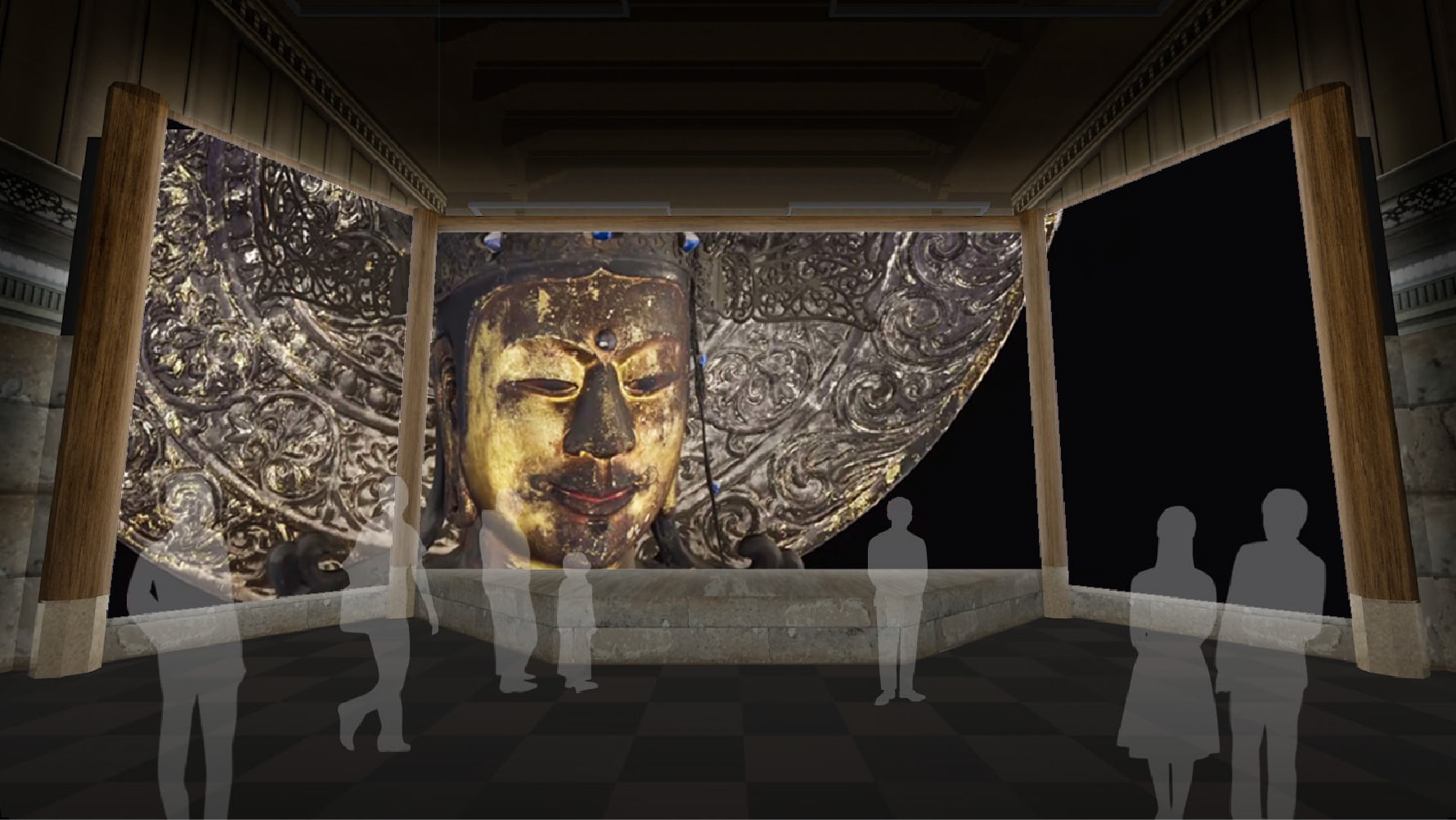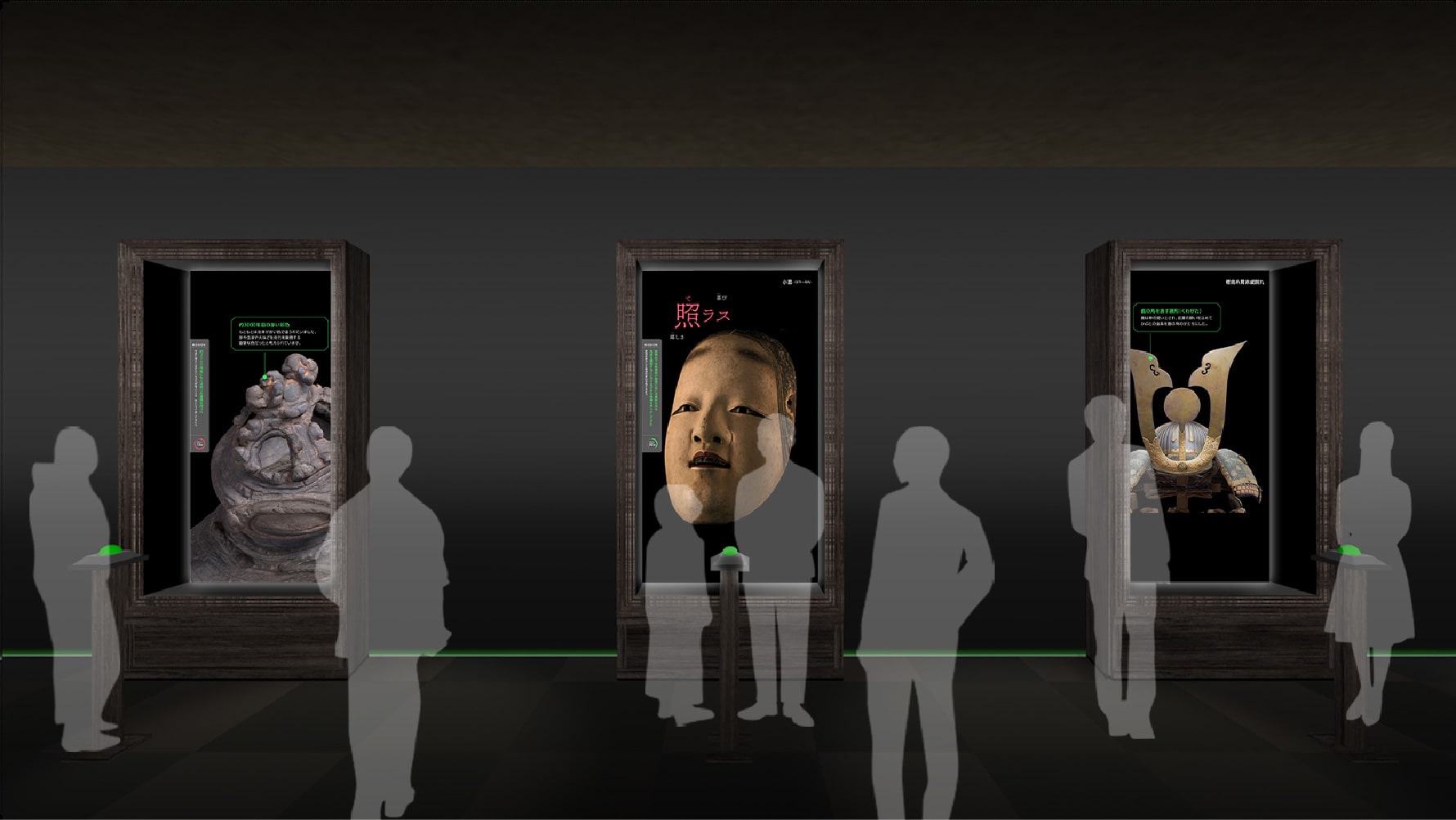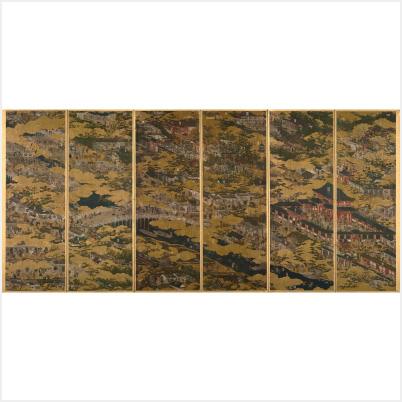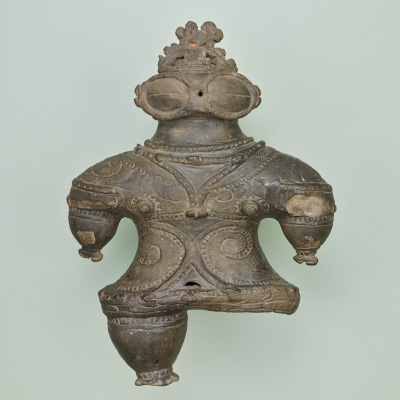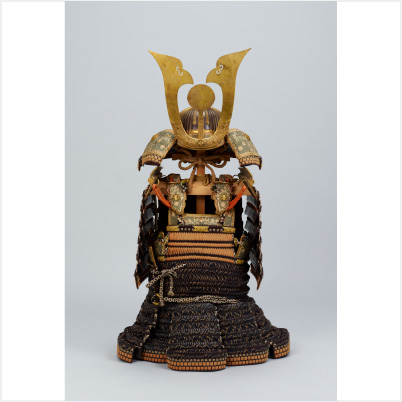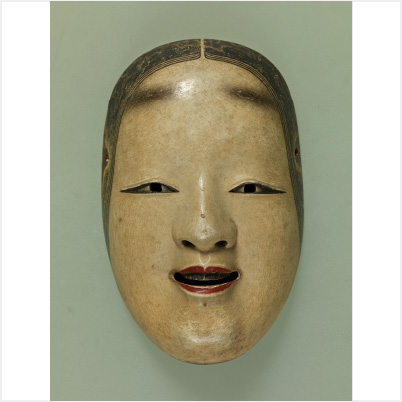First Gallery (Room T5, Japanese Gallery) Beyond Time and Space in 8K
Organizer: NHK
In this gallery, you can transcend the bounds of time and space to experience the wonder of cultural properties in new ways like 8K video technology. Enter the Hall of Dreams at Hōryūji Temple in distant Nara to view the hidden Buddhist statue within, or immerse yourself in the hustle and bustle of Kyoto 400 years ago, as painted in the National Treasure Scenes in and around Kyoto (Funaki Version).
- TOP
- First Gallery Beyond Time and Space in 8K
Highlights of
the Exhibition
Encounter Across Space
—Hōryūji Temple's Mysterious Golden Bodhisattva
Hōryūji is a Buddhist temple in Nara, located approximately 400 km from Tokyo. The principal object of worship at Yumedono, the Hall of Dreams, is a statue of the bodhisattva Kuse Kannon, a National Treasure. It was locked away for centuries, unseen even by the temple priests. Experience the impressive presence of this hidden, gleaming, golden Buddhist art as if it were right in front of you by 8K 3D graphics technology.
"8K Cultural Property": National Treasure Statue of the Bodhisattva Kuse Kannon, Hōryūji Temple
Encounter Across Time
—Visit Sights in and around Kyoto 400 Years Ago
The National Treasure Scenes in and around Kyoto (Funaki Version) is a large panorama of the Kyoto cityscape 400 years ago painted by the 17th-century painter Iwasa Matabei. Six navigators' introductions to food and fun, beauty and entertainment, and history and culture will be your guide on a trip through time. Enjoy strolling through the streets in Kyoto and find men and women of all ages, enjoying themselves and living their lives in vivid detail.
"8K Cultural Property": National Treasure Scenes in and around Kyoto (Funaki Version), Tokyo National Museum
Digital Hands-On Gallery
Enlarge, rotate, change the color of, and shine light on cultural properties. "8K Cultural Properties" offer a new era of hands-on experience that enables you to examine cultural properties up close and from a variety of angles as if you were holding them in your hands. Savor details that you could never see in a conventional gallery.
Digital Hands-on Gallery
Featured
Japanese Artworks

-
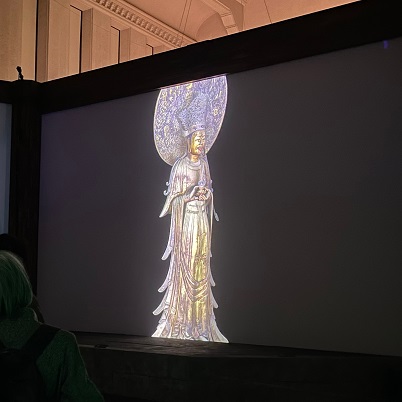
National Treasure
Standing Statue of Kannon (Kuse Kannon)
Asuka period, 7th Century
Hōryu-ji, Nara
Kuse Kannon is the principal object of worship in the Yumedono (Hall of Dreams), a hall built on the previous location of Prince Shōtoku’s palace, Ikaruga-no-miya. The statue is said to be a life-size depiction of Prince Shōtoku himself, and has been strictly hidden from public view since the Heian period (794–1192). The symmetry of the figure harkens back to the artistic style of the Northern and Southern dynasties of China (6th Century). The work also serves as a fully intact example that illustrates modeling techniques from the dawn of Buddhism in Japan. The statue itself was carved from a single piece of camphor wood that was then coated in a white plaster base and gilded from head to toe. The halo is shaped like a Buddhist wish-granting jewel, and the diadem features intricate detail in the openwork. The statue is widely considered to be an unparalleled masterpiece of Buddhist sculpture from the Asuka period (593–710).
-
National Treasure
Scenes in and around Kyoto (Funaki Version)
By Iwasa Matabei
Edo period, 17th century
This set of two six-panel folding screens depitcts central Kyoto as seen from the south. The scene is bustling with around 2,500 people, young and old, male and female. They are depicted enjoying themselves and going about their daily lives. It is also fun to try to spot famous landmarks and events such as Kiyomizu Temple, Yasaka Shrine, and the Gion festival.
-
Important Cultural Property
Clay Figurine (Dogū) with Goggle-Like Eyes
Found in Tsugaru City, Aomori
Jōmon period, 1000-400 BC
This dogū clay figurine was made during the Jōmon period. It is one of the most famous dogū figurines in Japan. It was found during the Meiji era and named the 'Dogū with Goggle-Like Eyes' because its eyes resemble goggles worn to protect the eyes from the glare of snow. However, this is now believed to be just an exaggerated depiction of the eyes.
-
Important Cultural Property
Armor (Dōmaru) with "Eurasian Jay" Lacing, Red at the Top
Muromachi period, 15th century
Japanese armor that wraps around the wearer's body and fastens together on the right-hand side is known as dōmaru-type. The kusazuri, or the skirt-like part protecting the lower body, is divided into eight sections to enable the legs to move freely. This suit is also furnished with a helmet and arm guards. It is highly-renowned as a representative example of dōmaru armor. This was formerly the property of the Akita family, who were the lords of Mihara fief in Mutsu province.
-
Important Cultural Property
Noh Mask: Ko'omote
With branded mark "Tenkaichi Kawachi"
Formerly owned by the Konparu troupe
Edo period, 17th century
The warlord Toyotomi Hideyoshi (1537-1598) acquired three ko'omote (young woman) Noh masks by the famous craftsman Tatsuemon. Hideyoshi named the masks "snow," "moon," and "flower," respectively. He gave "snow" to the Konparu school of Noh, "moon" to Tokugawa Ieyasu (1543-1616), the first shogun of the Edo period (this mask was later lost in a fire), and "flower" to the Kongo school of Noh. This is one of many copies of the "snow" mask.


